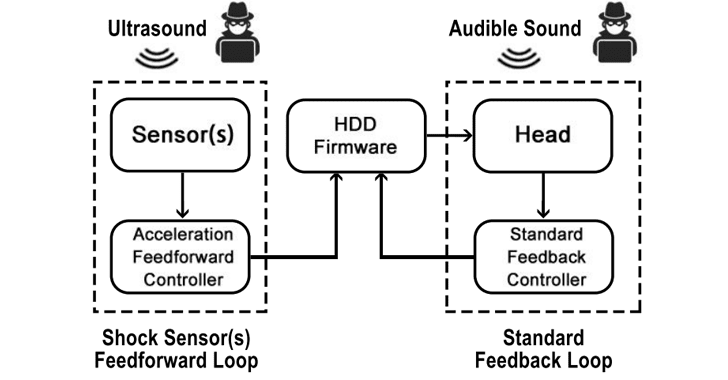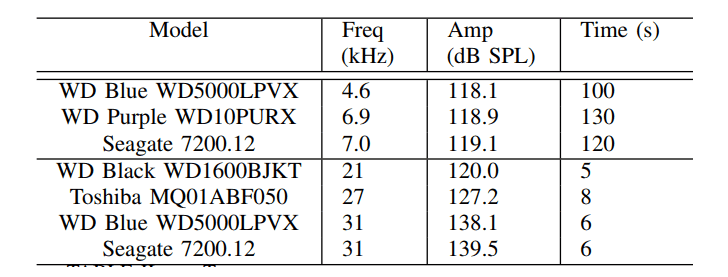Researchers have demonstrated how sonic and ultrasonic signals (inaudible to human) can be used to cause physical damage to hard drives just by playing ultrasonic sounds through a target computer’s own built-in speaker or by exploiting a speaker near the targeted device.
Similar research was conducted last year by a group of researchers from Princeton and Purdue University, who demonstrated a denial-of-service (DoS) attack against HDDs by exploiting a physical phenomenon called acoustic resonance.
Since HDDs are exposed to external vibrations, researchers showed how specially crafted acoustic signals could cause significant vibrations in HDDs internal components, which eventually leads to the failure in systems that relies on the HDD.
To prevent a head crash from acoustic resonance, modern HDDs use shock sensor-driven feedforward controllers that detect such movement and improve the head positioning accuracy while reading and writing the data.
However, according to a new research paper published by a team of researchers from the University of Michigan and Zhejiang University, sonic and ultrasonic sounds causes false positives in the shock sensor, causing a drive to unnecessarily park its head.
By exploiting this disk drive vulnerability, researchers demonstrated how attackers could carry out successful real-world attacks against HDDs found in CCTV (Closed-Circuit Television) systems and desktop computers.
“An attacker can use the effects from hard disk drive vulnerabilities to launch system level consequences such as crashing Windows on a laptop using the built-in speaker and preventing surveillance systems from recording video,” the research paper reads.
These attacks can be performed using a nearby external speaker or through the target system’s own built-in speakers by tricking the user into playing a malicious sound attached to an email or a web page.
In their experimental set-up, the researchers tested acoustic and ultrasonic interferences against various HDDs from Seagate, Toshiba and Western Digital and found that ultrasonic waves took just 5-8 seconds to induce errors.
However, sound interferences that lasted for 105 seconds or more caused the stock Western Digital HDD in the video-surveillance device to stop recording from the beginning of the vibration until the device was restarted.
“In the case that a victim user is not physically near the system being attacked, an adversary can use any frequency to attack the system,” the researchers explain.
“The system’s live camera stream never displays an indication of an attack. Also, the system does not provide any method to learn of audio in the environment. Thus, if a victim user were not physically near the system, an adversary can use audible signals while remaining undetected.”
The researchers were also able to disrupt HDDs in desktops and laptops running both Windows and Linux operating system. They took just 45 seconds to cause a Dell XPS 15 9550 laptop to freeze and 125 seconds to crash when the laptop was tricked to play malicious audio over its built-in speaker.
The team also proposed some defenses that can be used to detect or prevent such type of attacks, including a new feedback controller that could be deployed as a firmware update to attenuate the intentional acoustic interference, a sensor fusion method to prevent unnecessary head parking by detecting ultrasonic triggering of the shock sensor, and noise dampening materials to attenuate the signal.
You can find out more about HDD ultrasonic acoustic attacks in a research paper [PDF] titled “Blue Note: How Intentional Acoustic Interference Damages Availability and Integrity in Hard Disk Drives and Operating Systems.”









